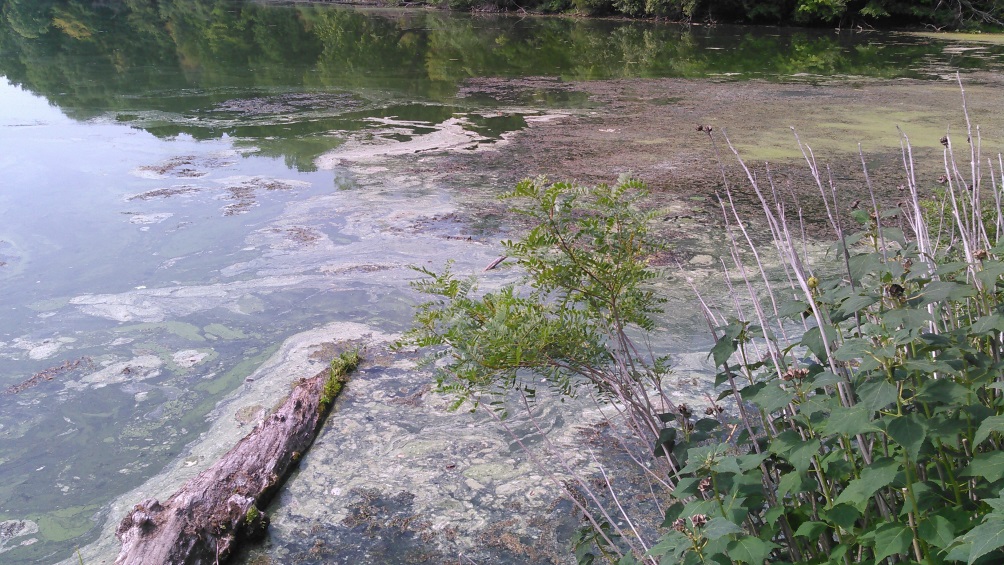 Harmful Algal Blooms (HABs), also referred to as blue-green algae, are blooms of algae which produce toxins that can be harmful to people and animals. HABs usually develop in nutrient-rich waters, particularly during hot, calm weather.
Harmful Algal Blooms (HABs), also referred to as blue-green algae, are blooms of algae which produce toxins that can be harmful to people and animals. HABs usually develop in nutrient-rich waters, particularly during hot, calm weather.
The New York State Department of Environmental Conservation (NYSDEC) is the lead agency for HABs. The NYSDEC identifies and documents HABs, communicates health risks to the public, provides guidance on bloom management, and conducts research.
The role of the Monroe County Division of Environmental Health is to determine if reported HABs will have an impact on a regulated public swimming area or a drinking water supply source.
If you see it, avoid it. Avoid contact with any water with floating scum or discoloration – this includes your pets and livestock. Sometimes it is not easy to tell just by looking whether the algae contain toxins. Laboratory analysis of a water sample is the only way to tell for sure.
If contact occurs:
- Rinse thoroughly with clean water to remove algae. Stop using water and seek medical attention immediately if symptoms such as vomiting, nausea, diarrhea, skin, eye or throat irritation, allergic reactions, or breathing difficulties occur after drinking or having contact with blooms or untreated surface water.
- People vary in their sensitivity to HABs exposure, in the way some people are more sensitive to poison ivy and other environmental allergens and irritants. Cyanobacteria can release toxins and other harmful compounds that affect people through skin exposure or ingestion. Gastrointestinal symptoms including nausea, vomiting, and diarrhea are possible. Skin or throat irritation, allergic reactions, or asthma-like breathing difficulties are also symptoms of exposure. If you are experiencing symptoms from HAB exposure, you should inform your physician to help determine the proper course of treatment
- Pet and livestock illness/deaths can happen if animals consume large amounts of water containing blooms, scums or benthic mats. Immediately seek veterinarian care if noticing any symptoms in your animals.
Report it. The NYSDEC monitors and tracks HABs throughout the State. Potential HABs can be reported to the NYSDEC using the Suspicious Algal Bloom Report Form.
Get notified. In 2019, NYSDEC modernized its HABs Reporting and Notifications system and created NYHABS: The New York Harmful Algal Bloom System. NYHABS can be used to report a HAB to NYSDEC and see waterbodies in New York that have reported HABs.
NYHABS is composed of an online reporting system and an interactive map. When bloom reports are confirmed by NYSDEC staff, information about the HAB and their location are posted publicly on the NYHABS interactive map.
Get more Information. Use the following links to obtain more information on HABs:













